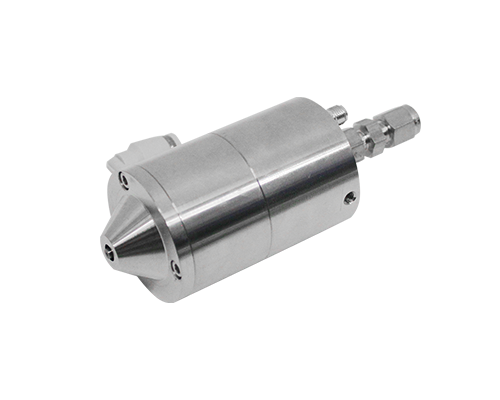The Working Principle and Advantages of Ultrasonic Spraying
Ultrasonic spraying, also known as ultrasonic coating, is a spraying process that uses ultrasonic atomization technology. Ultrasonic precision spraying system is a surface precision ultrasonic spraying equipment integrating ultrasonic atomizing nozzle, ultrasonic generator, liquid supply system, motion system, heating system, exhaust system, etc.
The sprayed material is first in a liquid state, and the liquid can be a solution, a sol, a suspension, etc., and the liquid coating is first atomized into fine particles by an ultrasonic atomization device, and then evenly coated on the surface of the substrate by a certain amount of carrier gas , thus forming a coating or film.
How Ultrasonic Spraying Works
1. Ultrasonic nozzle
The ultrasonic nozzle is a spray nozzle that uses the high-frequency vibration generated by the piezoelectric transducer to act on the nozzle head, thereby generating capillary waves in the liquid film. Once the amplitude of the capillary waves reaches a critical height (due to the power level provided by the generator), they become too tall to support themselves, and tiny droplets fall from the tip of each wave, causing atomization.
The main factors affecting the initial droplet size are vibration frequency, surface tension and liquid viscosity. Frequencies are typically in the 20–180 kHz range, which is beyond the human hearing range, and within this range the highest frequencies produce the smallest droplet sizes.
Ultrasonic nozzle The working principle of the ultrasonic nozzle is to use an ultrasonic transducer to convert high-frequency sound waves into mechanical energy, and then convert it into liquid, thereby generating standing waves. As the liquid leaves the atomizing surface of the nozzle, it breaks up into a fine mist of uniform micron-sized droplets. Different from traditional nozzles that rely on pressure and high-speed motion to break liquid into small particles. The ultrasonic nozzle uses liquid ultrasonic atomization, and the energy of ultrasonic vibration is low. The liquid can be delivered to the spray head by self-gravity or low-pressure liquid pump for continuous or intermittent atomization.
2. Working principle of ultrasonic spraying
Each ultrasonic nozzle operates at a specific frequency, which determines the droplet size. Nozzles are manufactured from high strength titanium alloy and stainless steel to make them resistant to chemical attack and provide good performance. Liquid is introduced into the atomizing surface through an unclogged feed tube running the length of the nozzle, causing vibrations in the liquid on the atomizing surface. In order to atomize the liquid, the vibration amplitude of the atomizing surface is carefully controlled. Below the so-called critical amplitude, the ultrasonic energy is insufficient to generate atomized droplets. If the amplitude is too high, the liquid is torn apart and a large “fluid block” is ejected. Only in a specific narrow range, the low-speed fine mist of ultrasonic spraying is produced.
Chinese Website: Cheersonic Provides Professional Coating Solutions

